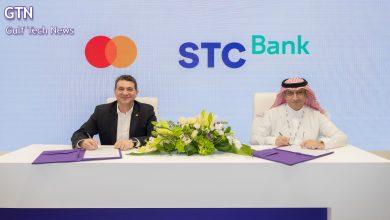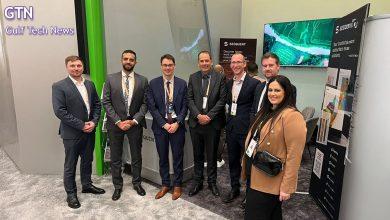الصندوق السعودي للتنمية يضيئ على أبرز اسهاماته في تمويل ودعم المشاريع البيئية بالتزامن مع انعقاد قمة مبادرة الشرق الأوسط الأخضر
الرياض، جلف تك :
عندما يمضي الحراك التنموي، في مساراته المتسارعة، قاصدا تحقيق ركائز التنمية المستدامة في نطاقاتها المختلفة وأشكالها المتعددة في مختلف الدول النامية، فإن جهود ومبادرات وإنجازات الصندوق السعودي للتنمية في المحافظة على البيئة والمناخ لا بد وأن تكون حاضرة وفق سياسة المملكة العربية السعودية القائمة على دعم أهداف التنمية المستدامة، والتعاون مع المجتمع الدولي بما يتوافق مع أجندة الجمعية العامة للأمم المتحدة.
وحيث تحتضن الرياض خلال هذه الأيام قمة مبادرة الشرق الأوسط الأخضر التي تجمع بين قادة بارزين من المنطقة والعالم، بهدف تعزيز التعاون وتوحيد الجهود نحو تنفيذ الالتزامات البيئية المشتركة، فإن توجهات المملكة العربية السعودية، ومساراتها التنموية في قطاع البيئة تبدو واضحة باتجاه تحقيق متطلبات مبادرة السعودية الخضراء، مع المضي قدما في إطار التعاون مع الدول المجاورة لمواجهة تحديات التغير المناخي.
وتنسجم أهداف قمة مبادرة الشرق الأوسط الأخضر، مع الدور الريادي الذي تقوم به المملكة من خلال الصندوق السعودي للتنمية لدعم الجهود الدولية لمواجهة التحديات الرئيسية المرتبطة بالبيئة؛ فقد عمل الصندوق خلال السنوات الماضية على دعم وتمويل مشاريع مستدامة تساهم في مواجهة ظاهرة التغيّر المناخي وحماية الأرض والطبيعة.
منذ تأسيسه عام 1975م، موّل الصندوق السعودي للتنمية مشاريع تنموية ذات أولوية للدول النامية، وصل عددها إلى أكثر من 694 مشروعاً في 84 دولة، تجاوزت قيمتها الإجمالية 69.1 مليار ريال سعودي، أسهمت في تطوير العديد من البرامج المرتبطة بالمشاريع الانمائية. وكان للصندوق دوراً هاما في تمويل وتنفيذ مشاريع الري وحفر الآبار والسدود، التي أحدثت أثراً إيجابياً في تنمية النشاط الزراعي والتشجير، والحفاظ على المخزون المائي، وحماية المناخ البيئي ومقاومة التصحر، والحد من هدر الطاقة.
ويعد البرنامج السعودي لحفر الآبار والتنمية الريفية في أفريقيا الممول بمنحة من المملكة يديرها الصندوق، من المشاريع الهامة التي تساهم في الحد من آثار الجفاف في 18 دولة أفريقية، حيث تم حفر وتجهير أكثر من 8800 منشأة مائية تعتمد معظمها على الطاقة الشمسية لضخ المياه؛ استفاد منها أكثر من 4.5 مليون انسان.
إضافة إلى مشاريع الطاقة البديلة والمتجددة التي مولها الصندوق في 9 دول آسيوية وأفريقية، والتي بلغ إجمالي انتاجها من الطاقة الكهربائية حوالي 42,000 ميغاوات من الطاقة المستدامة والنظيفة.
وفي إطار حديثه عن مساهمات الصندوق في تعزيز أهداف التنمية المستدامة، وتوفير متطلبات الاستقرار البيئي ونظافة الكون، أكد الرئيس التنفيذي للصندوق سلطان بن عبد الرحمن المرشد: ” أن الصندوق السعودي للتنمية، يساهم بتحقيق أهداف التنمية المستدامة العالمية للأمم المتحدة، من خلال دعم المشاريع المختصة بالنشاط المناخي والمياه النظيفة والتعليم وتعزيز النمو الاقتصادي والطاقة المتجددة والبنية التحتية الأساسية، بما يحقق الحياة الكريمة للشعوب، وتوفير المتطلبات الإنسانية.”
وتتنوع مجالات نشاط الصندوق في قطاعي الزراعة والطاقة، حيث تستهدف الحفاظ على البيئة ومصادرها الطبيعية، وتعزيز الأمن الغذائي، من خلال مشاريع استصلاح الأراضي وبناء السدود لتخزين المياه الصالحة للأغراض الزراعية وتوليد الطاقة النظيفة. وساهم الصندوق في عدد من مشاريع التشجير والتخضير في الدول النامية مثل مشروع تخضير أريتريا، الذي يهدف إلى زيادة انتاج المحاصيل الزراعية وحماية وإصلاح الأراضي التي تعرضت للتعرية،
ومشروع تشجير (موقامبا – وتوتسي) في بوروندي، الذي يهدف إلى حماية التربة من الانحراف الناتج عن الأمطار الغزيرة وإلى تعزيز الثروة الخشبية عن طريق إعادة تشجير منطقة تبلغ مساحتها 10,000 هكتار. وبلغ إجمالي مساهمة مشاريع الصندوق والبرامج التنموية في مشاريع استصلاح الأراضي الزراعية اكثر من 170 ألف هكتار، بهدف زيادة عملية التشجير والإنتاج الزراعي.
وتُعد الطاقة المتجددة من أهم القطاعات التنموية التي تحتاج إليها الدول النامية في عملية التنمية الاقتصادية والاجتماعية، خصوصاً مع تزايد التحديات التي تفرضها القضايا المرتبطة بتغير المناخ وما يصاحبها من زيادة الاحتباس الحراري وزيادة انبعاث الغاز والكربون على مستوى العالم، وقد تمكن الصندوق السعودي للتنمية من تقديم الدعم لإنشاء وتطوير 11 سداً لإنتاج الطاقة الكهرومائية تشمل تحويل مسارات الأنهار وبناء مصدات وسدود ومولدات لتحويل القوة المائية إلى مصدر للطاقة المستدامة والنظيفة،
وكان له دور رئيسي في بناء سد “مروي” في السودان الذي يولد 1,250 ميغاوات من الطاقة الكهربائية، إضافة إلى سد سامديني في بوركينا فاسو الذي يوفر 2.6 ميغاوات من الكهرباء.
وفي قارة آسيا، دعم الصندوق مشاريع الطاقة المتجددة في باكستان ونيبال، بقيمة تقارب 1.2 مليار ريال سعودي، وموّل مشروع تطوير شبكة كهرباء تعمل بالطاقة المتجددة في مخيم الأزرق للاجئين السوريين بالأردن، يعد الأول من نوعه في العالم في مجال الطاقة المتجددة، والذي يعمل على توفير الطاقة النظيفة لأكثر من 54 ألف لاجئ سوري، وتأمين التيار الكهربائي لأكثر من 10 ألاف مأوى.





